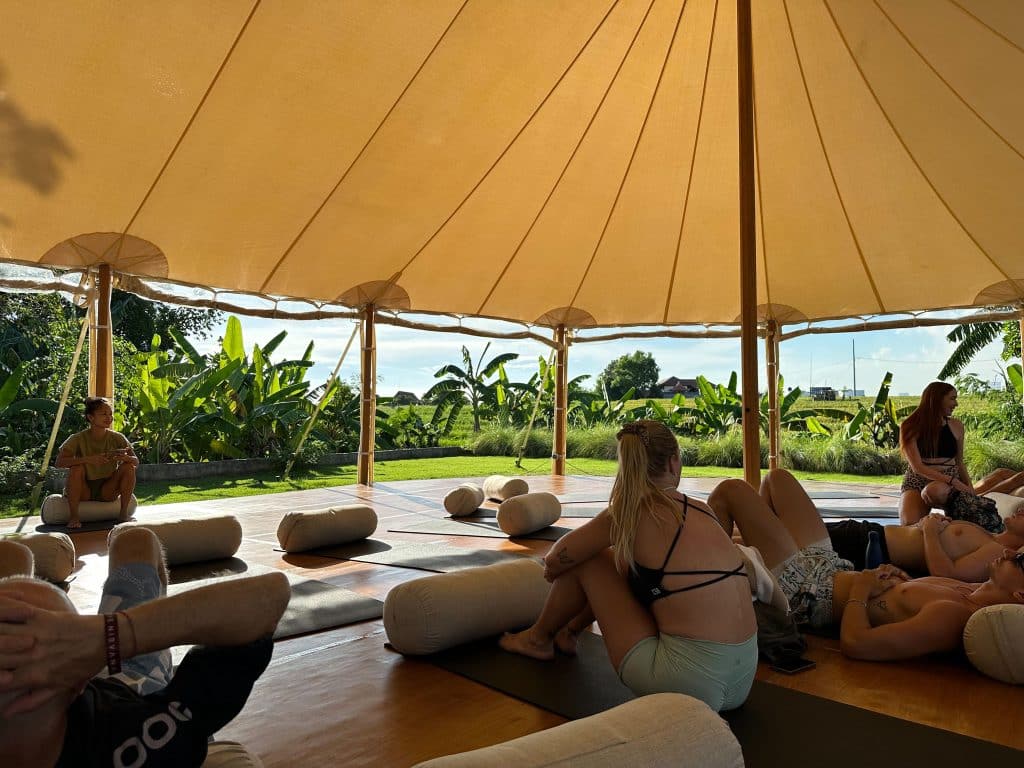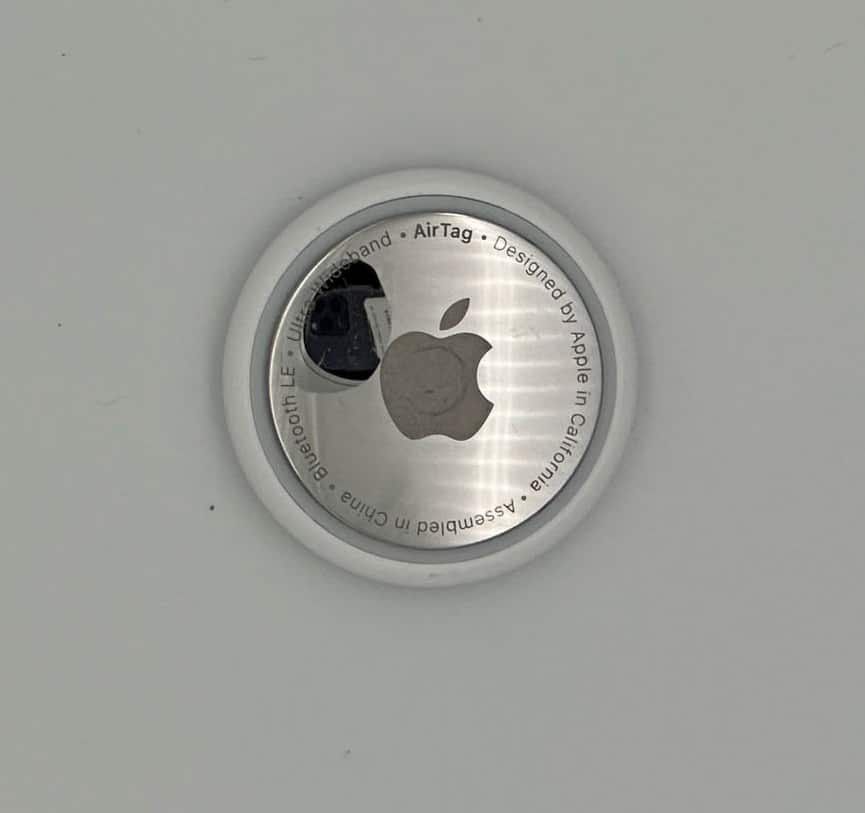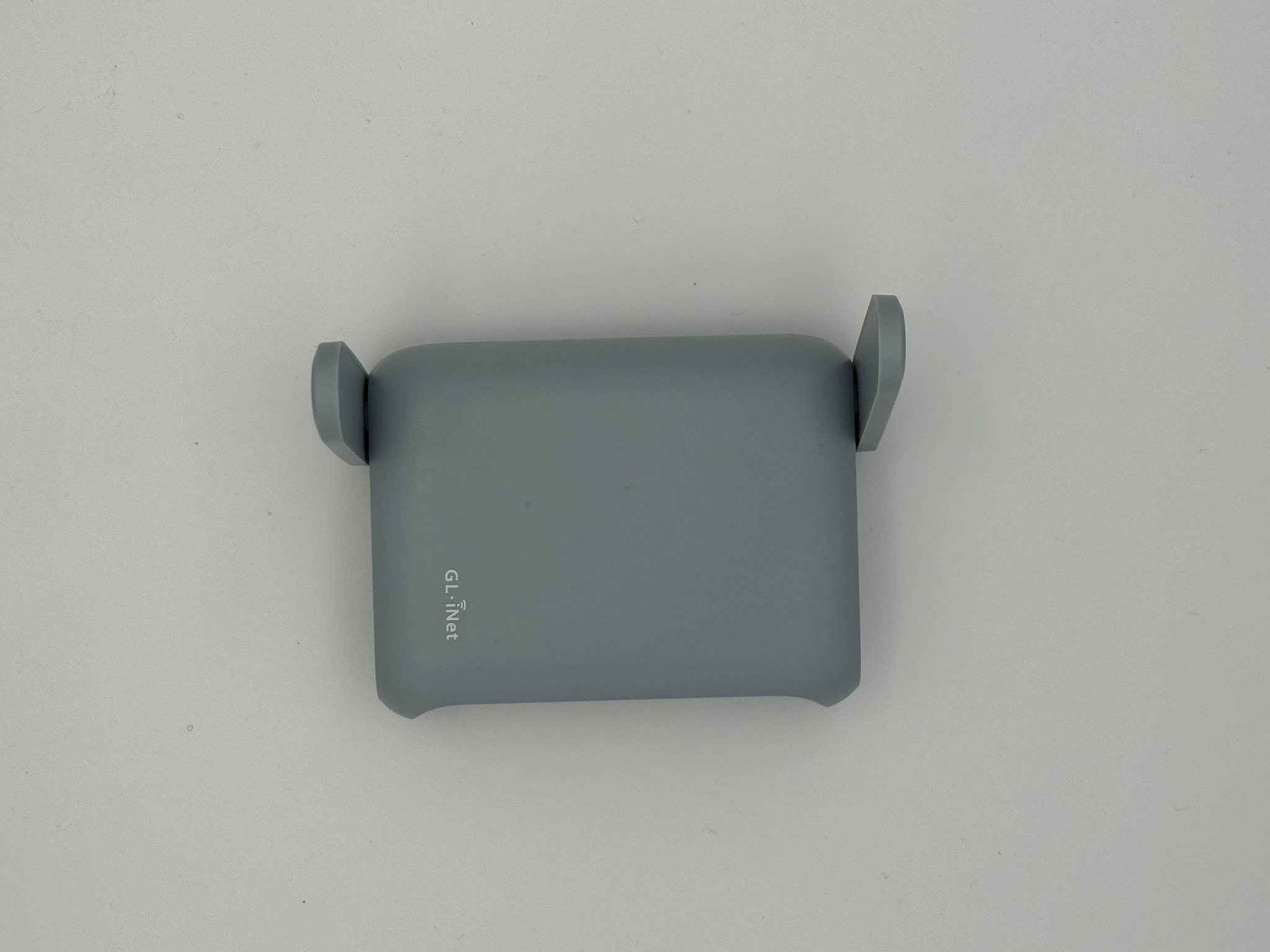Bali, Blog, Indonesia | 22 May 2025 | 15 MIN READ
Best Gym in Bali: Why Bali’s Hybrid Gyms Are Changing How Digital Nomads Work and Train
46 days ago
I never thought working shirtless was cool until I went to Bali. It might give off a ‘let’s just be hot and do nothing’ vibe, but there’s more to the story.
Introduction: The Evolution of Gyms in Bali
The challenge of maintaining fitness while traveling has led Bali to reinvent the gym experience. This fusion of fitness, work, and lifestyle in one location creates premium fitness spaces in Canggu like Nirvana.
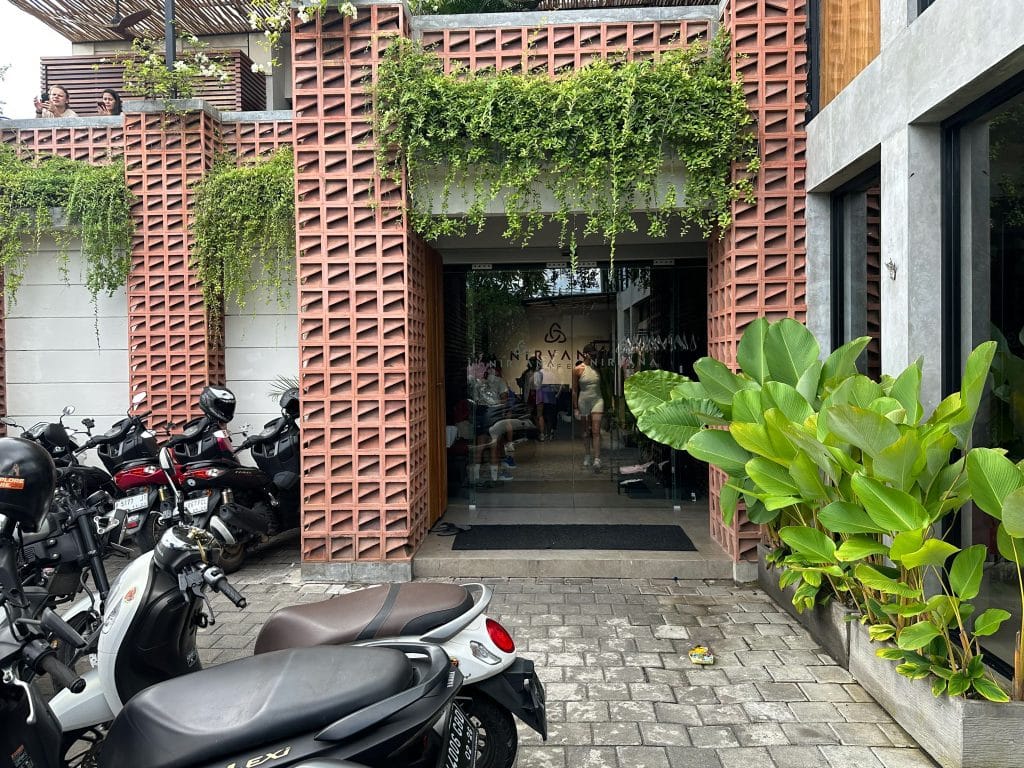
The American Gym Experience vs. Bali’s Approach
In the U.S., gyms can be drab and have the same feeling. Driving by LA Fitness instantly gives an ugh feeling. Fluorescent lights. Equipment laid out like an Amazon warehouse. People hogging machines with their 1 Gallon water bottles. The usual brands being worn: No Bull, Fabletics dot the landscape.
At these industrial-style gyms, the clientele wear long Russell basketball shorts with Reebok pump-up shoes. There’s a certain air that screams yes, my as* smells and it’s sweaty.
These traditional gyms in the U.S. offer a disconnected experience: workout and leave. The gyms in America are clinical in nature, like a Tyson’s chicken slaughterhouse. There is no ethos, no rhythm, no joie de vivre. One gym that attempts this feeling in terms of chains in the U.S. is Lifetime Fitness, but that is still seen as a club-like feeling, not quite lifestyle.
I’d be okay with business as usual if the place where I spend an hour or more daily for most of my life actually represented something meaningful.
Bali offers something different. You still get influencer types, but not as bad as LA Fitness where people do hip thrusts on flatbench machines with content creator tripod stands recording their fitness journey.
In Bali, you get a more varied crowd with beach-ready bodies, but the gym experience is more elevated and not just something that screams gymbro or gymgal.
As someone who values fitness and was blessed with Midwest gyms during undergrad—and whose bodybuilding uncle was previously Mr. USA, placed in Mr. Universe, and is now a tech worker—I have a thing or two to say about gyms.
Here’s my criteria for gyms:
- Does their website have enough pictures of the actual equipment? No, next
- What does the clientele look like? Overly botoxed? Fresh off a round of SARMs?
- What’s the food / smoothie situation like?
- What’s the cleanliness of the bathroom?
- Is it worth it?
Going by this philosophy eliminates a lot of gyms in Bali. But I settled on one.
It’s like the CarFax commercial saying just “Show me the CARFAX.” I’m like, just show me the gym! Just give me a picture!
It’s already hard enough trying to find a gym while traveling. But flying halfway across the world and trying to figure out which one has the vibe you want is even more challenging. Picking a gym is like picking a personality. After checking out Wrong Gym and Nirvana, I settled on Nirvana, and I’ll show you why.
The Integrated Ecosystem: Why Bali’s Fitness Centers Are Different
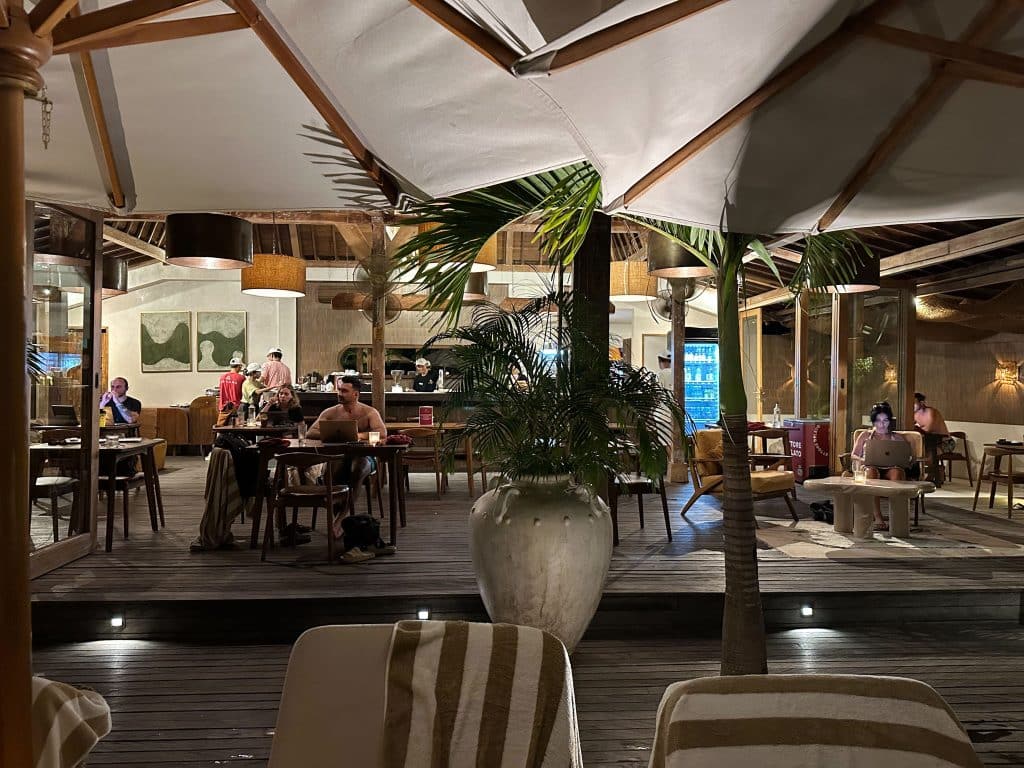
I’d be okay with business as usual if the place where I spend an hour or more daily for most of my life actually represented something meaningful. For work, you spend most of your time there – shouldn’t you like it? Same goes for the gym. If you factor in commuting through traffic, one hour working out, assume two hours total (especially if swimming), plus one hour back through traffic, that’s up to four hours every day except weekends.
Let’s say you’ve been working out for 20 years. That’s 4 × 7 × 52 × 20 = 29,120 hours. That’s roughly 30,000 hours. Equivalent to 14 years of your life if you count the gym as a job. Or $600,000 in lost income at $20/hour. Shouldn’t a place where you invest that much time actually serve a purpose that matches your lifestyle? If you’re spending this much time somewhere that’s become your second or third ‘life’ outside of work and family—shouldn’t it mean something more?
College gyms understand this. Places like University of Michigan’s gyms, Northeastern University, Kent State’s gym, even Harvard University’s gyms create a sense of pride and community that makes you want to stay there, spend time there, live there. Brands with strong ethos generate more revenue because people want to be part of something bigger.
That’s what Bali gyms offer—a sense of community. You actually want to purchase their merch and engage with the vibes. Of course, the downside is that this displaces the local community, and the focus becomes the gym itself and not the environment, people, locale, and community that allowed this gym to be there in the first place. The local community could feel like outsiders as they enter these foreign-run gyms.
Despite these negative attributes, they serve a purpose for the working nomad as a place to communicate and collaborate, just like saunas in Nordic countries or breweries and sports in many communities around the world.

Bali’s gyms fall into the lifestyle category where you blend work and life for extended periods. For Americans, this sounds crazy. You might ask: Why would I spend any more time at LA Fitness than I need to? I want to get in and get out of that cesspool labeled as gym.
But these gyms are different. You can workout in an open-air gym, just like their open-air hostels which give a freer feeling working out in the sun (if you want). Yes, they do have enclosed workout areas.
At the same time, they offer food on site through a restaurant or café. You might think Lifetime Fitness has a café—no, that’s not a café. That’s a cafeteria that’s as bland and stale as a Holiday Inn complimentary breakfast.
This is an open-air restaurant that makes Nasi Goreng, along with health food drinks where you can work on a laptop without problem, in front of a pool that you can swim in, with a sauna off in the distance.
It’s like having a resort membership where you can reserve chairs with towels, seamlessly switching between work, fitness, and socializing. No American gym chain offers this integration—and no, Equinox doesn’t count.
The Nomadic Clientele
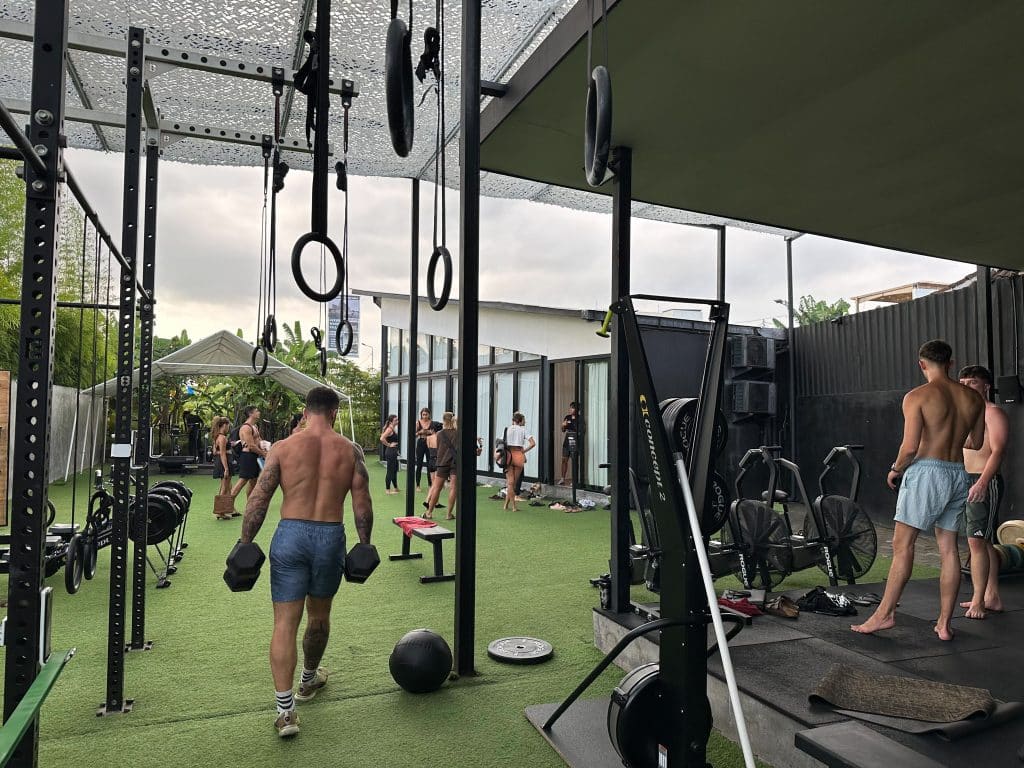
Given the nature of Bali, you have a more nomadic type of clientele at these “gym resorts.” You have digital entrepreneurs working on side hobbies or projects, fitness enthusiasts (sometimes you can see this based on their body type and if they probably were on gear), and even OF models.
These spaces foster community and connection among nomads. You can easily strike up a conversation with those next to you. At Nirvana Life Fitness and Wellness Club, I met many different business owners–from Quebec, but now has an Australian-based business offering marketing services.
overall, the clientele breaks down into distinct archetypes. You have the influencer hustlers / entrepreneurs hustling. But you also have the legitimate remote professionals—people with serious corporate positions who just happen to work from anywhere.
This diversity creates an interesting dynamic, especially around work priorities. At Nirvana, it’s easy to get wrapped up in the resort-like atmosphere and lose focus on actual productivity. The key is knowing which archetype you are and maintaining discipline accordingly.
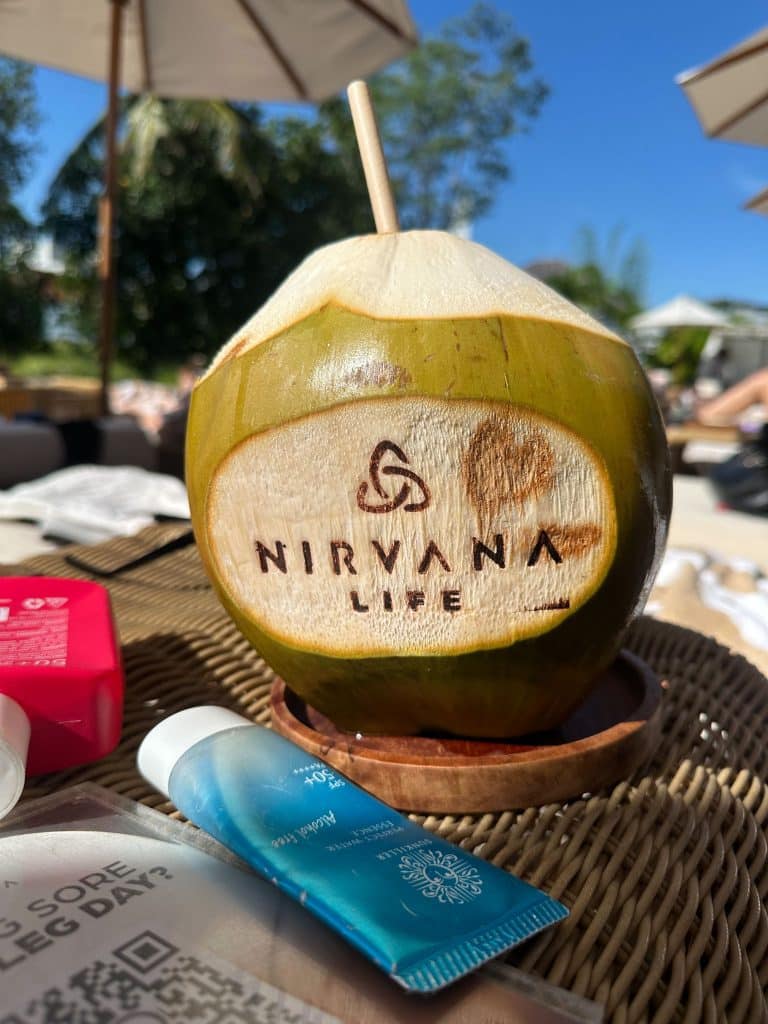
I witnessed this firsthand when someone needed to take an important work call. A fellow gym-goer suggested, “Why don’t you just take the call here and make them jealous to know that you’re here?” And the other person responded, “Yeah, I don’t think they would like that.”
This exchange perfectly illustrates the divide between those treating nomadism as a lifestyle versus those with serious professional obligations. The one person who left to take their call understood that you cannot be taken seriously with a pool in the background with people in thong bikinis running around. Even if you positioned yourself in a booth or somewhere shaded, there’s still people splashing in the pool and plenty of individuals speaking in different languages. It’s obvious that it can be challenging to leave that behind and travel back and forth to the gym, but it’s better to go home to take your call and then come back to the gym. And that’s exactly what that person did.
Featured Gear
*Contains affiliate links – I may earn a commission at no extra cost to you
Spotlight on Nirvana Life
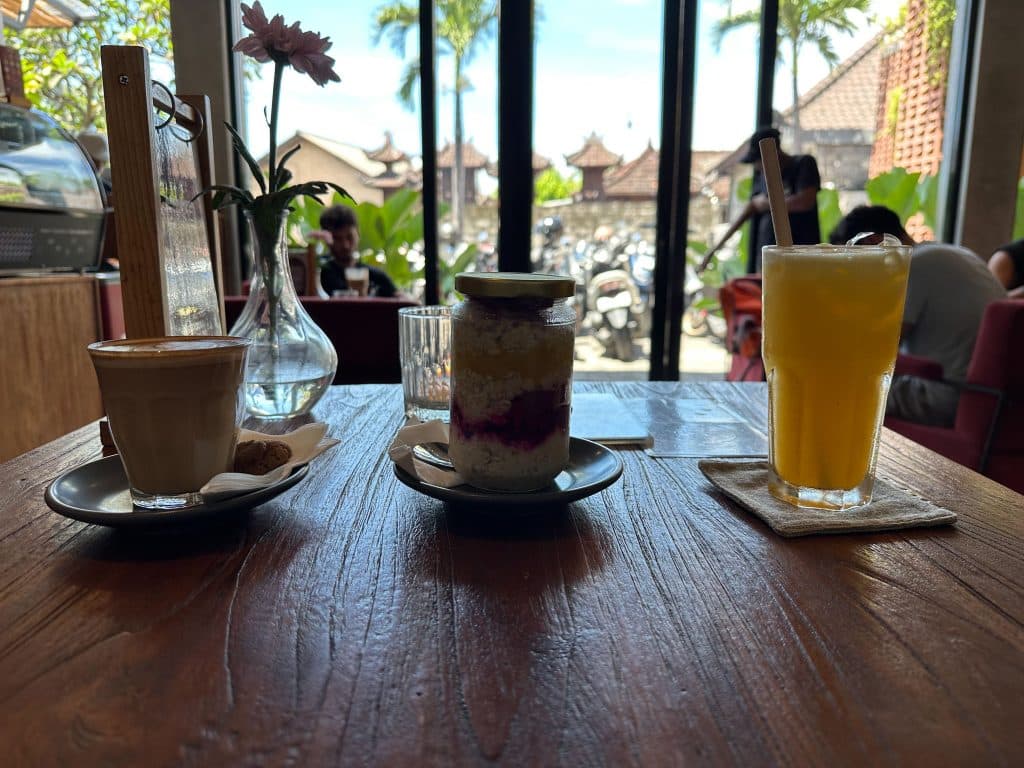
One of the gyms we checked out was Nirvana, a rather popular gym on IG. After looking at numerous other places, this one seemed to offer the most experience for the dollar–despite the fact it was hovering around US gym prices.
The location itself is pretty horrible. It sits in the middle of an extremely busy intersection which makes it very hard and annoying for Gojek drivers to pick you up. It’s essentially right next to one of the busiest intersections in town that does not have a traffic light, which means congestion. Even when it’s not rush hour, there’s just congestion.
However, the location in terms of accessibility is actually pretty central, so you are next to all of the hot spots around Canggu, making it super easy to plan for dinner. In fact, some people deliberately pick housing and villas near here to have easy access to the gym and avoid traffic.
Once you enter the gym, it’s a rather open layout, designed to be expansive and opening up to rice fields, which are more visible in the far-end yoga studio area.
Facilities breakdown:
- Two-story gym with indoor and outdoor spaces
- Recovery areas (sauna, ice baths, pools)
- Co-working spaces
- Café with healthy food options
- Community events and classes (100+ per week)
This lifestyle center has two floors with indoor and outdoor spaces. It has recovery areas in terms of saunas that have ice baths right next to them, facing directly in front of the central pool. The restaurant also faces the pool, which serves as the main focal point for one of the outside areas.
Co-working spaces for a true nomad remain quite minimal. It’s not the same as climbing gyms in the U.S. like Brooklyn Boulders in Chicago (which I’ve been to), which offers more dedicated areas for remote work. But you can work from the pool chairs, in the restaurant, and throughout various seating areas.
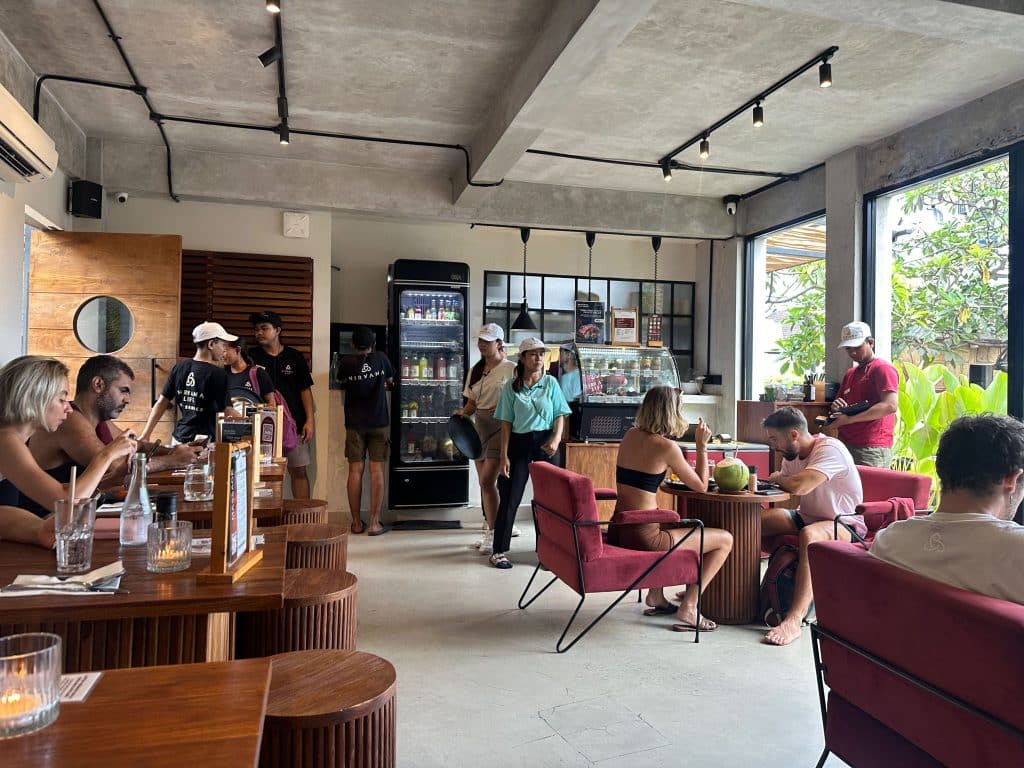
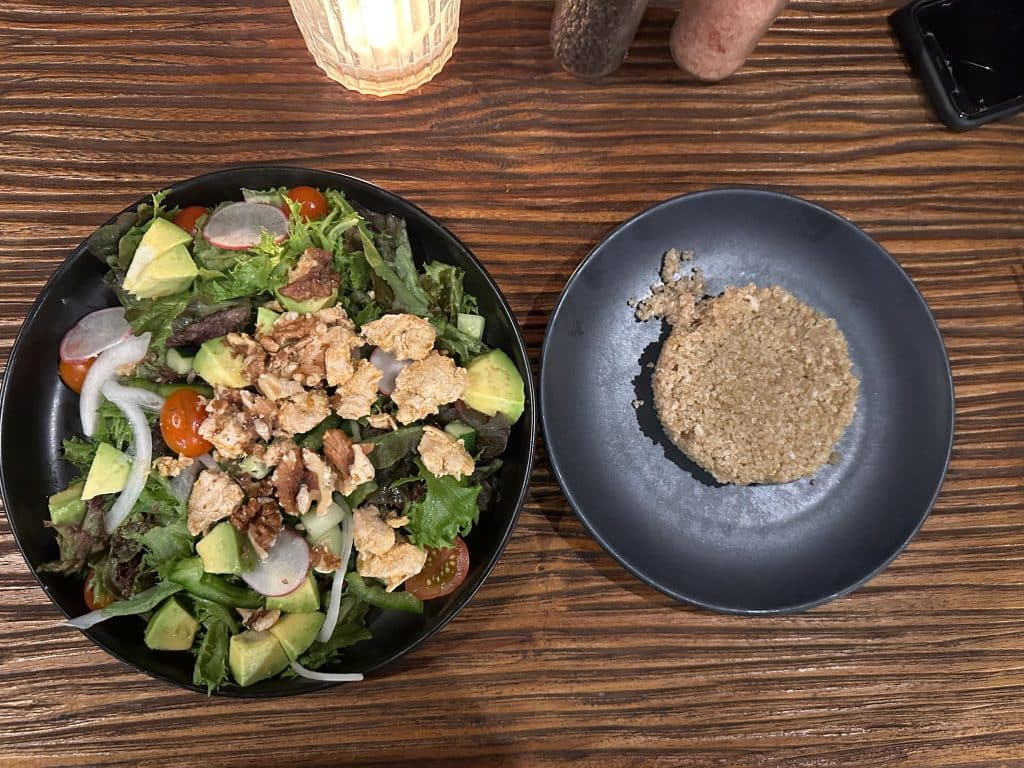

There’s a café before you enter that can be used strictly for business and is rather tiny but accessible to the public. Then when you enter Nirvana, you find the larger restaurant which has ice-cold coconuts that get purchased like crazy, as well as delicious local Indonesian meals and amazing healthy drinks and smoothies. If you’re there, I recommend getting the watermelon drinks – extremely refreshing especially on hot Bali sunny days.
The vibe of this place is actually pretty chill and quaint, enough to get work done. If you get one of the more private cabanas it can be pretty peaceful.
Clientele profile
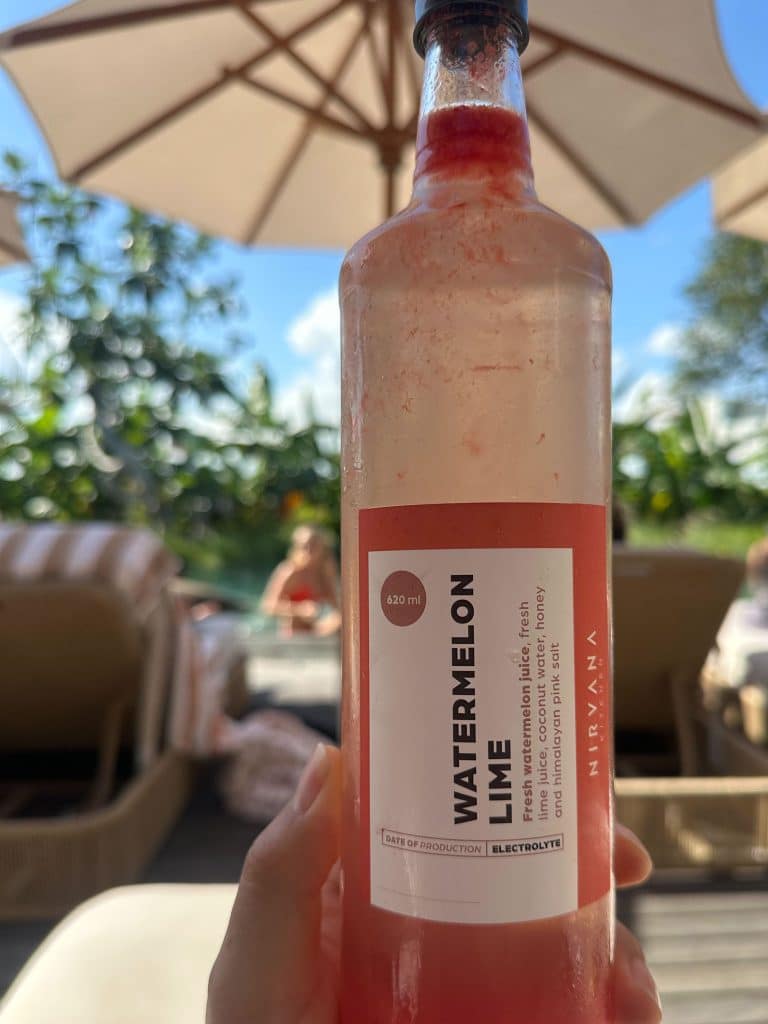
You will find the typical show-off type of clientele as well as fitness influencers, but I found this to be less than other gyms such as Wrong Gym. That can be due to the cost compared to Wrong Gym. As a result, you find people that are a little more serious and more geographically diversified than Wrong Gym, which would be primarily Russian-based.
Pricing structure and membership options
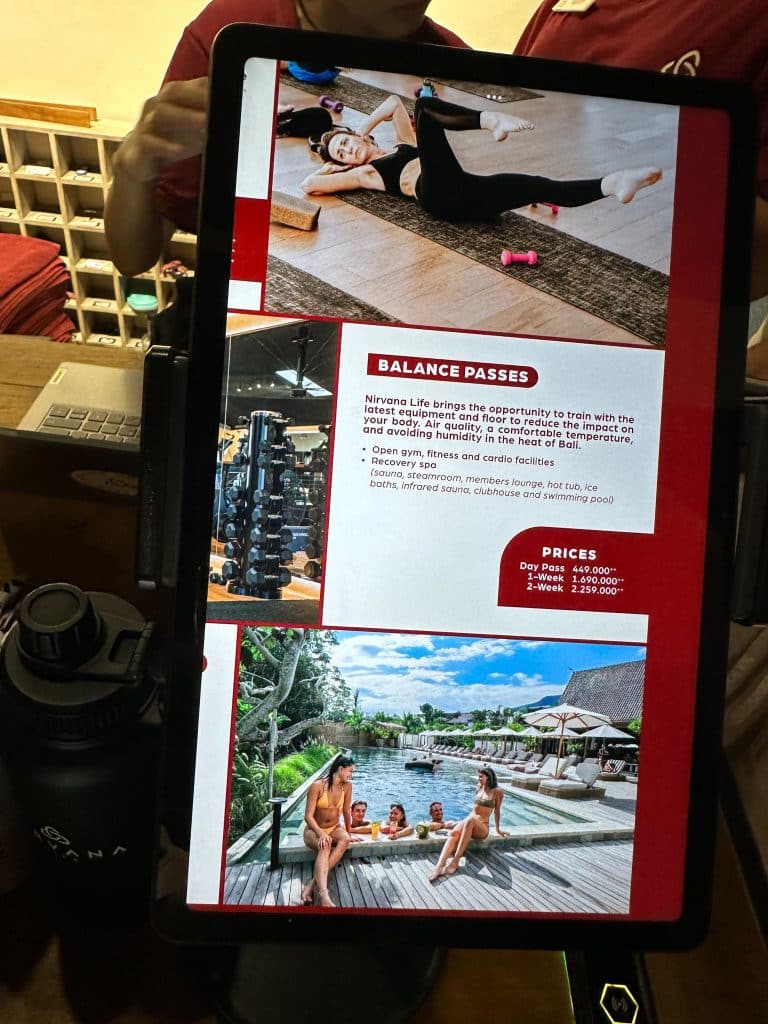
The pricing structure is awful. You can buy a monthly pass which costs just as much as Equinox at almost $300 a month, or a day pass. The day pass is subject to the feelings of the front staff and availability, which is entirely annoying.
Here’s the pricing breakdown:
- Day Pass: $30 USD (449,000 IDR)
- 1-Week: $113 USD (1,690,000 IDR) – works out to $16/day
- 2-Week: $151 USD (2,259,000 IDR) – works out to $11/day
- Monthly: Around $200 USD for the LIFE membership. (Similar to high-quality gym in the U.S. or near Equinox pricing with Amex discounts)
Day pass guests can be treated as second-class citizens despite the fact that you are still paying for this experience. If the main day passes are used up, then you have to select one that comes with a class, which drives up the cost.
While they are relatively cheap compared to USD, some of these prices are obviously beyond the reach of most of the Balinese population and start to creep on US pricing territory, which is rather absurd.
But at that price point, you filter out some clientele which means you have a different crowd allocation than you would at Wrong Gym. In many ways a bonus or premium. You are kind of paying for exclusivity.
Unique selling points
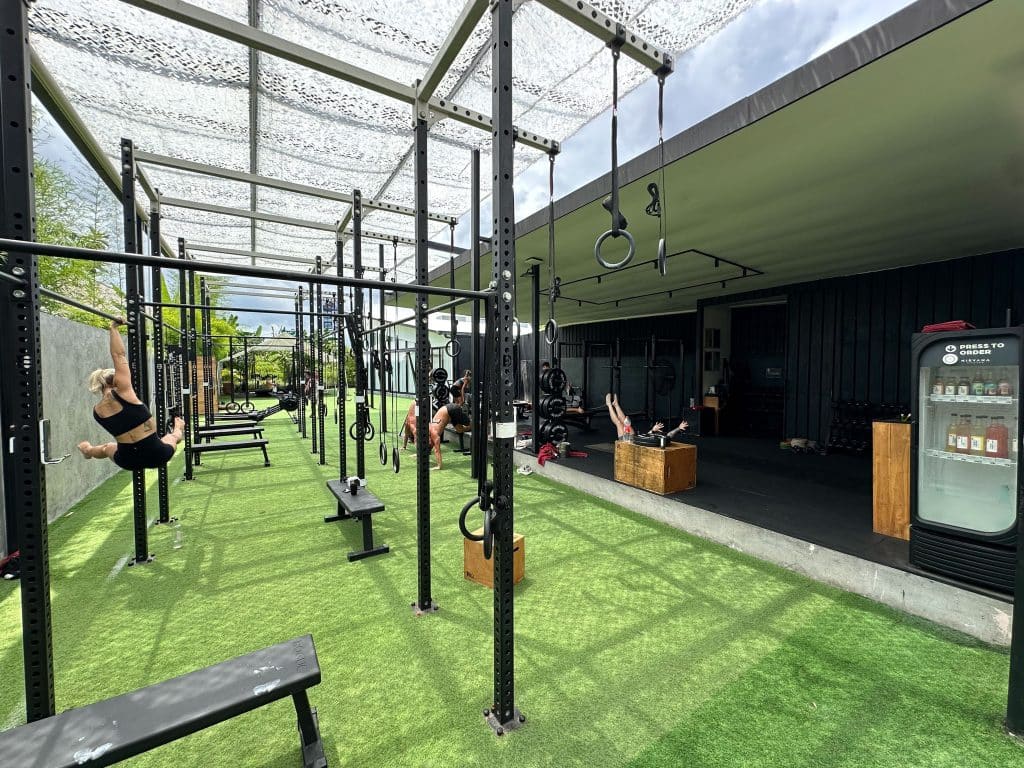
That exclusivity is one of its main selling points where you have a chance to “enter a realm” of working out.
Nirvana feels like you are entering an experience, just like you enter Disney and expect something. You are purchasing an experience, a community, like you feel part of a group—similar to the experience at a Four Seasons Hotel. Whereas at Wrong Gym, you’re a transaction and the experience is not quite the same—you are just saving a few dollars.
The other benefit is that many clients at Nirvana are attending co-working or networking opportunities. As a result, they are much more friendly than those at other gyms.
You can meet business owners, executives, or other professionals like those designing fashion and photography sets for the biggest names in show business—who actually told me I need to step up my game in blogging and photography.

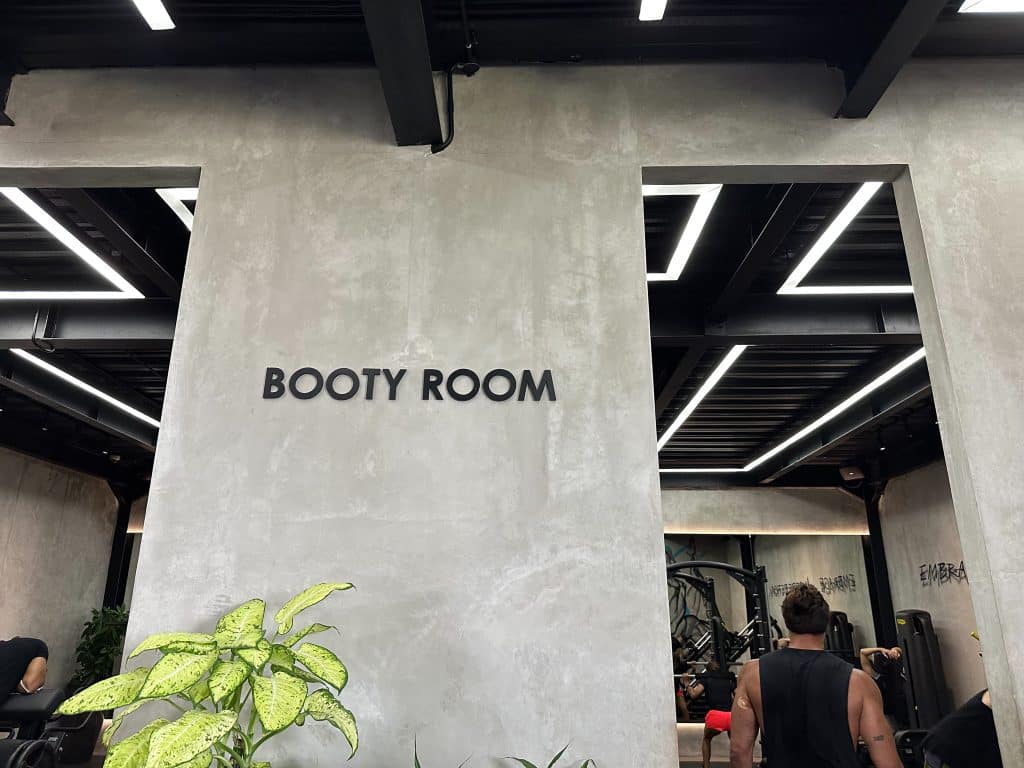
Elite Competitors in the Canggu Fitness Scene
Wrong Gym:
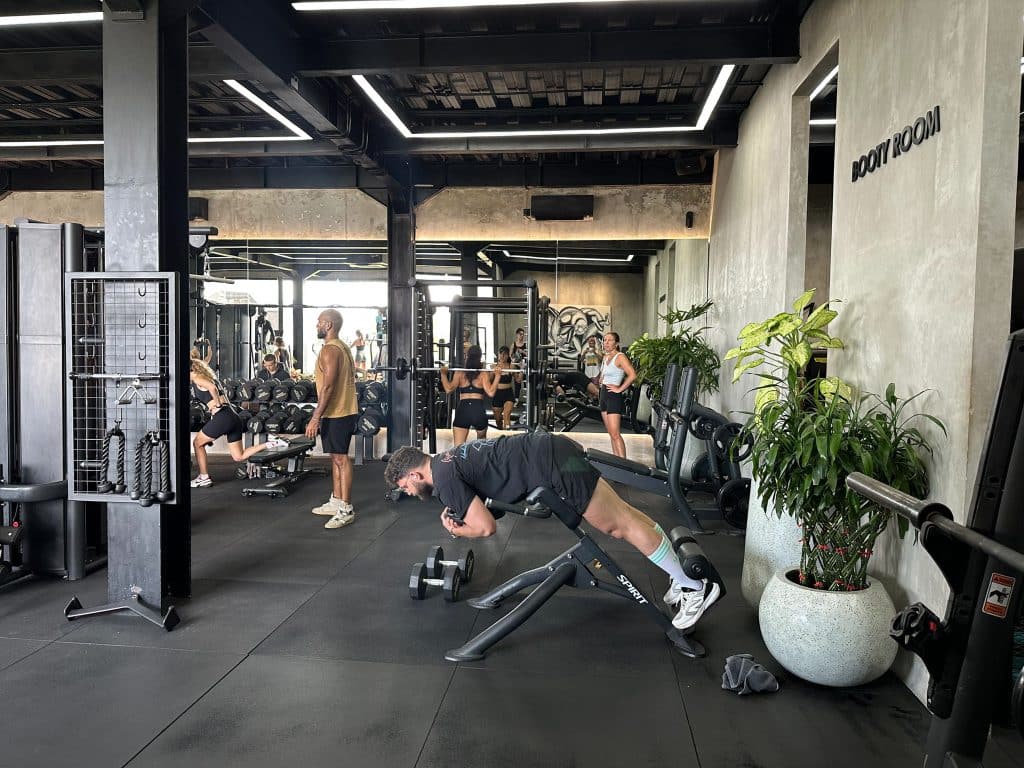
There are many other gyms in the area that can offer a certain vibe. Sometimes the gym you choose can be based on proximity. But given the cheap costs of Gojek if you are using USD, Pound, Euro, even Australian dollars—it’s just worth it to Gojek to a different gym that you really like.
Wrong Gym is another decent gym that was actually next to our hostel TRIBAL Coworking Hostel Bali and easily within walking distance, not too far from Pererenan beach.
This is a new gym, but felt smaller in many ways compared to Nirvana. There were three floors, which might seem like a lot, but the space has more space than actual equipment.
When you actually try to work out in the areas, it seems more designed for IG photoshoots than actual working out. Nirvana doesn’t label itself as a gym, so you won’t find typical workout equipment aside from squat racks and bench press.
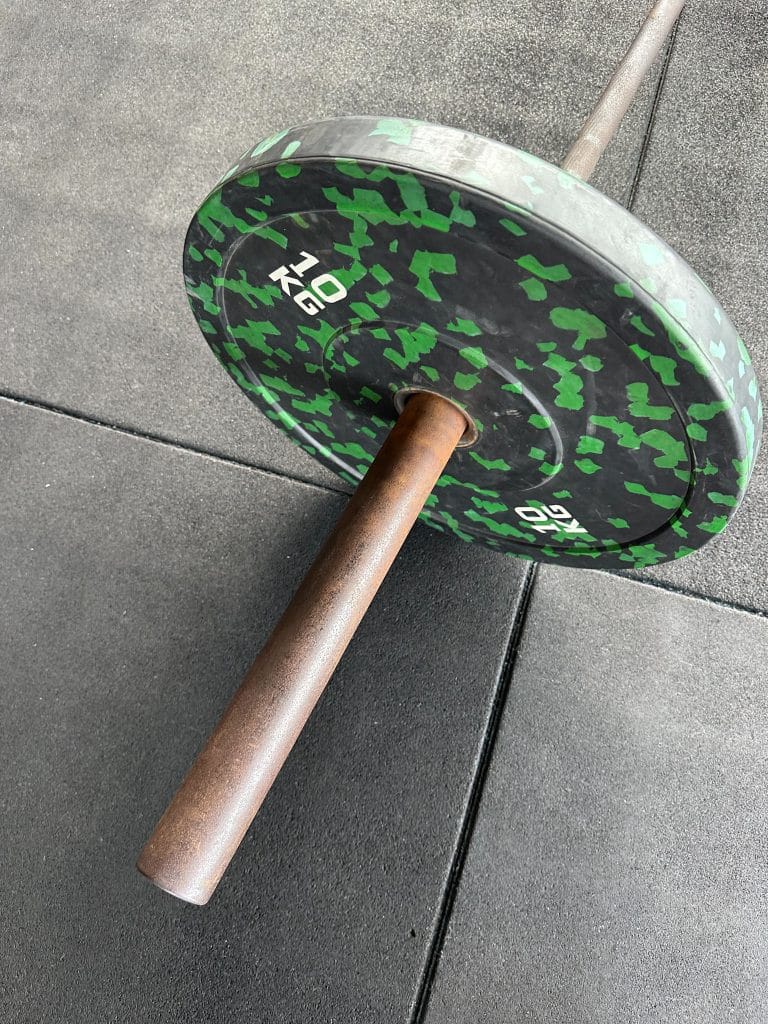
And that’s where Wrong Gym should prevail but falls short. Just go to the gym’s outdoor rooftop and you can see the rusted out equipment and poor upkeep.
However, Wrong Gym does have a pool and a sauna area, but the pool is smaller and less central and visible than Nirvana’s, and the kitchen area is attached right to the gym entrance.
In contrast, Nirvana’s main kitchen and bear area is situated well past the check-in area and in its own area so that it feels like a resort area where after you sit in the chair, you just walk up and go to the restaurant kitchen area like how it’s done at the Hilton in Mauritius or properties in Cancun.
Wrong Gym seems hastily put together with not as much focus on the customer experience.
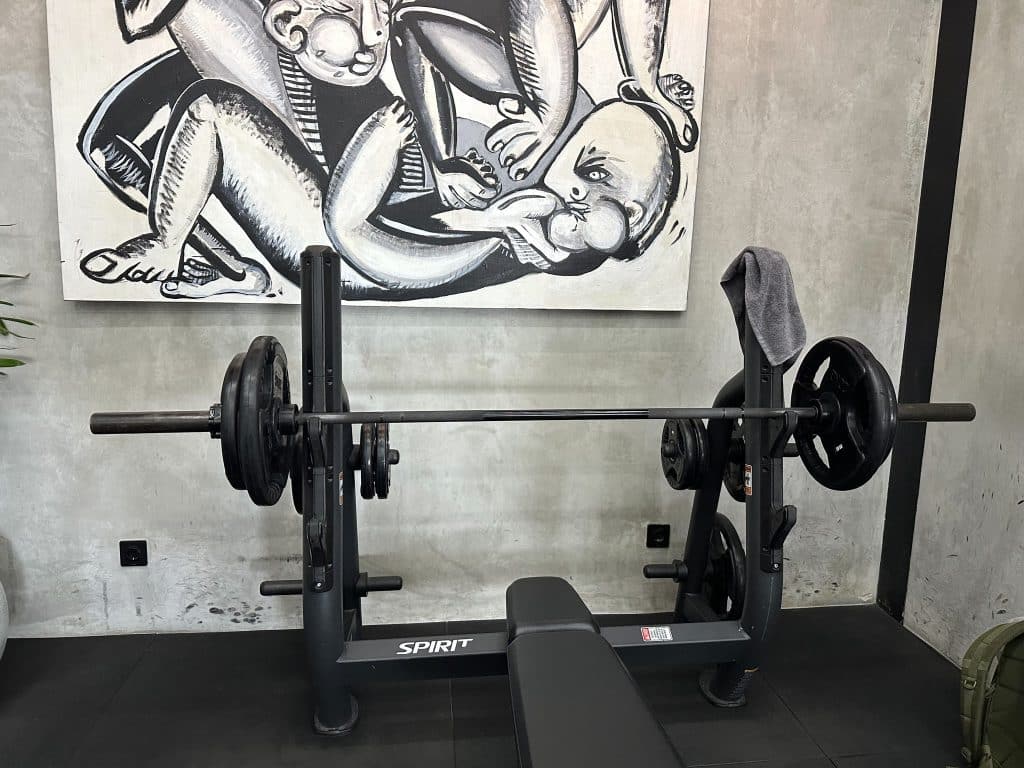
The Business Model Behind These Fitness Ecosystems
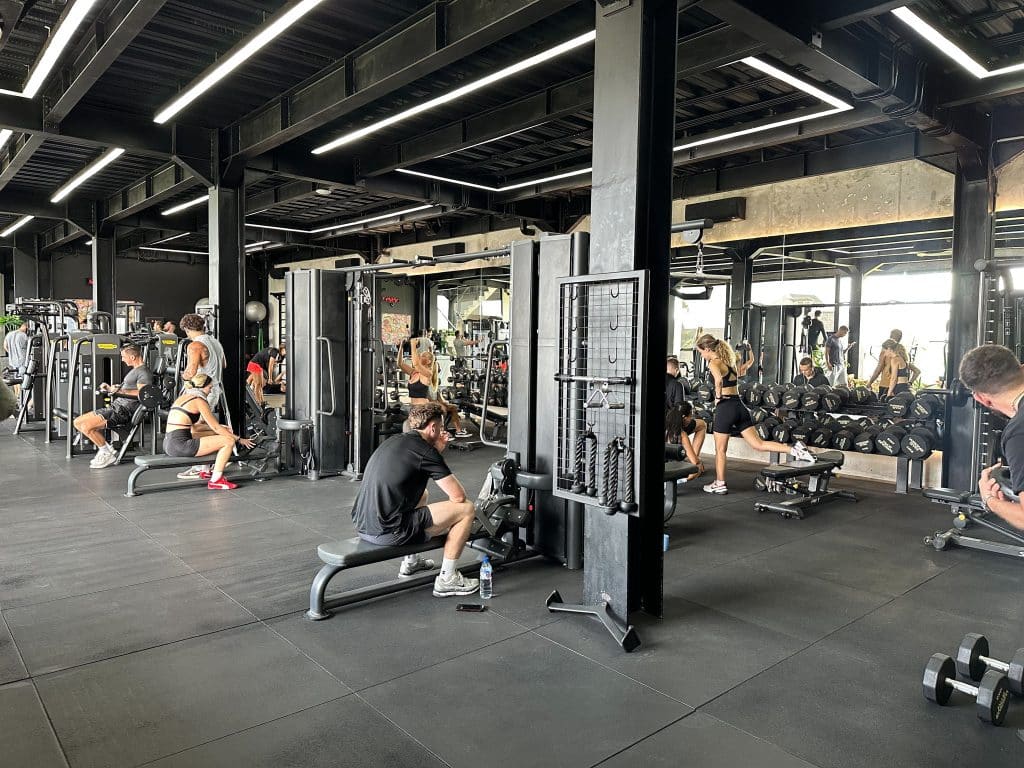
Gym memberships act as the entry fee in a captive customer model (but in a positive, more resort model type of way) to get people in the door. The bread and butter centers upselling classes, which are a huge selling point, but also the restaurant and the on-premise experiences. It’s also the way people approach chairs and ask if you need anything.
Once you keep buying enough cold coconut waters and coffee, the tab runs up. The goal is to maximize and extract as much money from a customer while they are on premise due to the amenities that would drive more money than the badges themselves.
A place like Bali can offer these all-in-one facilities—a captive ecosystem. In terms of economics, this means that you are essentially working at a workplace facility where you park your moped, and also a gym, and then a social setting (after work). It’s offering a 3-space vibe which is rather unique.
I suspect that this model could catch on in other places, but the flow of people needs to be present to meet demand. In Bali, as many gyms as there are, there aren’t even enough gyms. Nirvana is still overbooked and has too many people during the busy period.
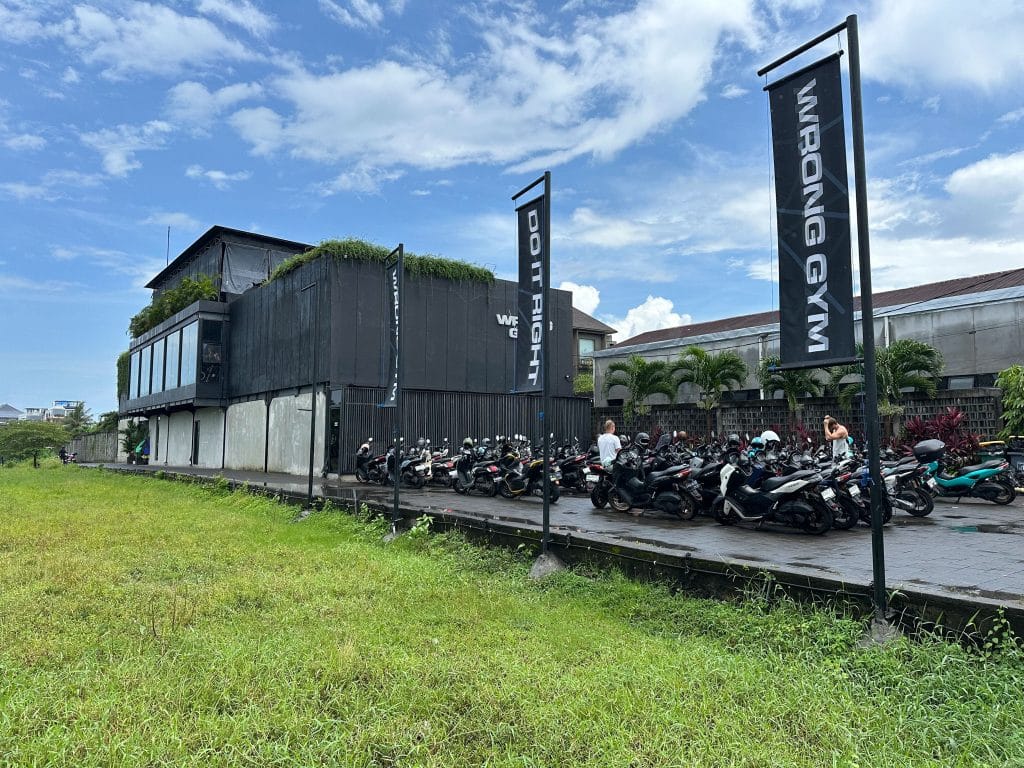
During the busy period, even when you enter to purchase a day pass, there are people lined up waiting to check in or enter. So there’s plenty of opportunity to create a better gym and improve the guest and customer experience, especially the check-in process.
I think there’s a possibility of having these in other areas, probably San Diego or Cancun. But it needs to be in an area where the year-round weather is really good and the costs of goods and living are rather cheap, and you have an influx of tourists coming from HCOL and strong currencies who want to come and dump their funds. Nevada or Florida could be ideal with their no state income tax.
In the U.S., it’s just transactional for gyms unless you are at a specialty-focused gym like for jiu jitsu or rock climbing, which serve a small subset of the gym-going population – and those that just want a place to hang out.
And that’s why these places work. They offer a place to cowork and meet others in one place. Sure, you can have a pool and coworking space like Tribal coworking hostel in Bali, but there’s no gym, it gets quiet, you can’t really relax and be yourself.
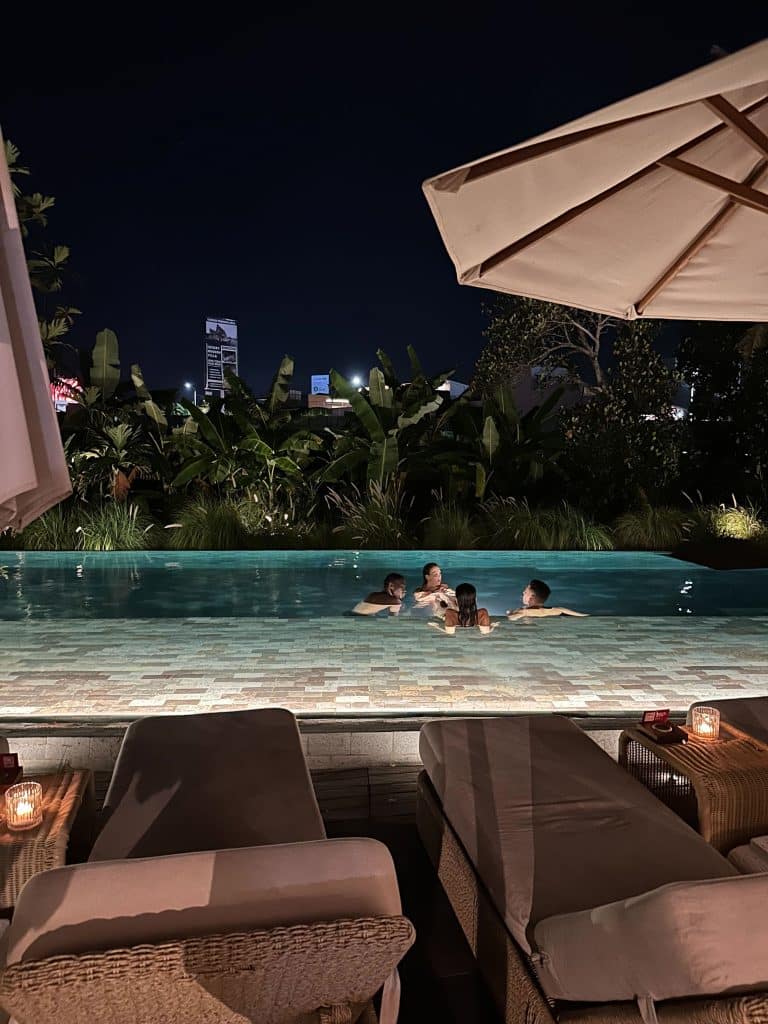
A straight coworking spot like Ducat cafe is cool for business meetings and getting deep work done, but those are just as isolating. That’s what you could be doing at home, so why do that in Bali?
Even if you pay the ridiculous monthly fee at places like Nirvana—the experience you’re getting is truly available. So for $300 a month or $10 a day, you have a gym that acts as work and a social area to network—which you don’t get in the U.S.
In the U.S., gym memberships range from $75-$160 monthly (not counting Equinox at $200+ or college gyms at $35). Coworking spots through DeskPass or WeWork—I’ve used both and my company has a WeWork option—cost $19-$60 per day for a desk, with private offices reaching $600/day. But you don’t get real networking—everyone stays in their assigned spaces or cubicles, and people guard their spots with personal items.
Then, let’s say you spend $7 a day on coffee. For a social poolside experience—rare outside Vegas or Valley Ho in Scottsdale—you’re looking at $20+ daily for drinks and snacks. You couldn’t get Nirvana’s watermelon drink and or a freshly made Balinese meal, that’s for sure.
Monthly US breakdown:
- Gym: $75 (LA Fitness low-end)
- Coworking: $600 (20 days × $30/day average)
- Coffee: $210 (30 days × $7)
- Social/poolside: $600 (30 days × $20)
- Total: $1,485/month
Nirvana Bali breakdown:
- Membership: $300
- Food/drinks: $300 (coffee $1.30, meals $10)
- Total: $600/month
Even at half the US cost, you get a completely different experience—working poolside with digital nomads from China, South Korea, India, France, Australia, Quebec (Canada), New Zealand, and the US all in a given square foot. The networking and community aspect has no US equivalent.
So it’s still not comparable on a dollar-to-dollar comparison. Does it still mean it’s overpriced? Yes!
The Social Ecosystem: Who You’ll Meet
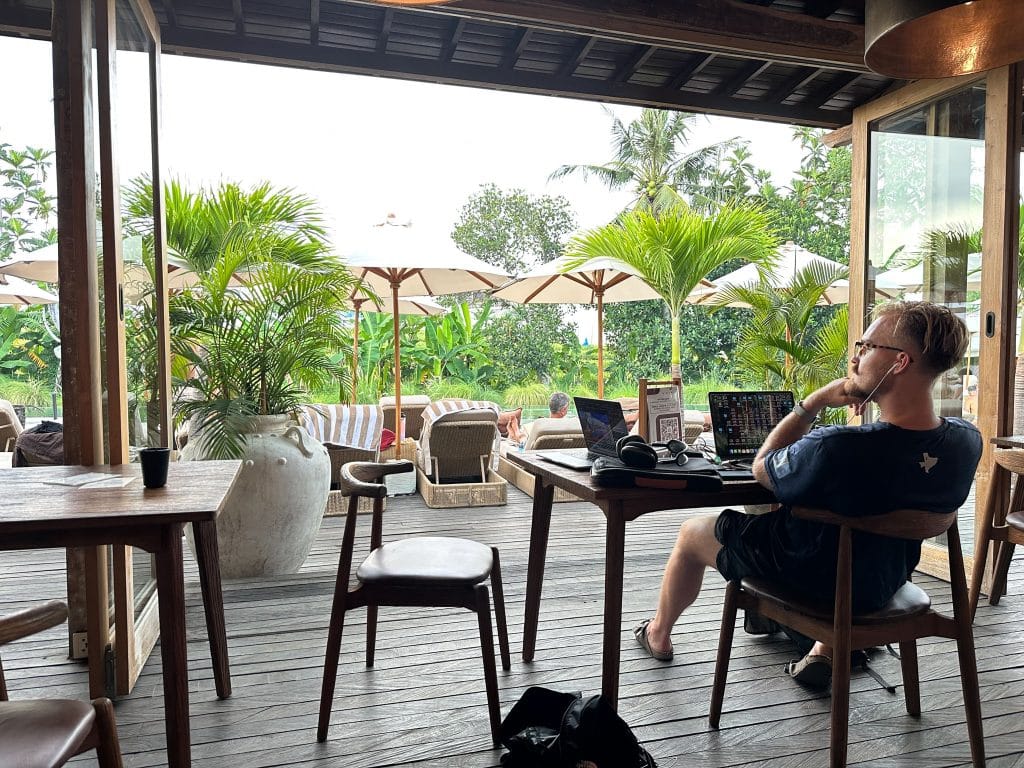
Here you have a chance to meet those from different countries either passing through or working remotely.
This gives you plenty of chances to meet new individuals, learn about new fields from those in different industries across the world that you would never know existed—some businesses I’d never heard of. If you are a business or marketing person, then obviously these places should be your calling.
Given the nature of working, working out, and social, there’s a blend of work and play. So it will not be University of Chicago type of place where their motto is “where the fun comes to die“—instead, this is more like work hard, play hard.
You still need to be a dedicated employee; otherwise, you will get distracted by the people, conversations, or environment in general since it’s basically the equivalent of working at the beach.
I recommend sampling gyms to get a taste of where you want to spend your time.
These gyms absorb the expat and nomad community, not the local population in general. It will be challenging finding locals. Similarly, if you are a Type A personality in the workplace, this sort of environment could hard, too.
But if you want a home away from home—a Type B personality—and are solo traveling, mixing a coworking hostel with a lifestyle gym like this will help you find new connections and a new set of friends who will make you feel at home. Who knows you might even find yourself.
The Digital Nomad Perspective
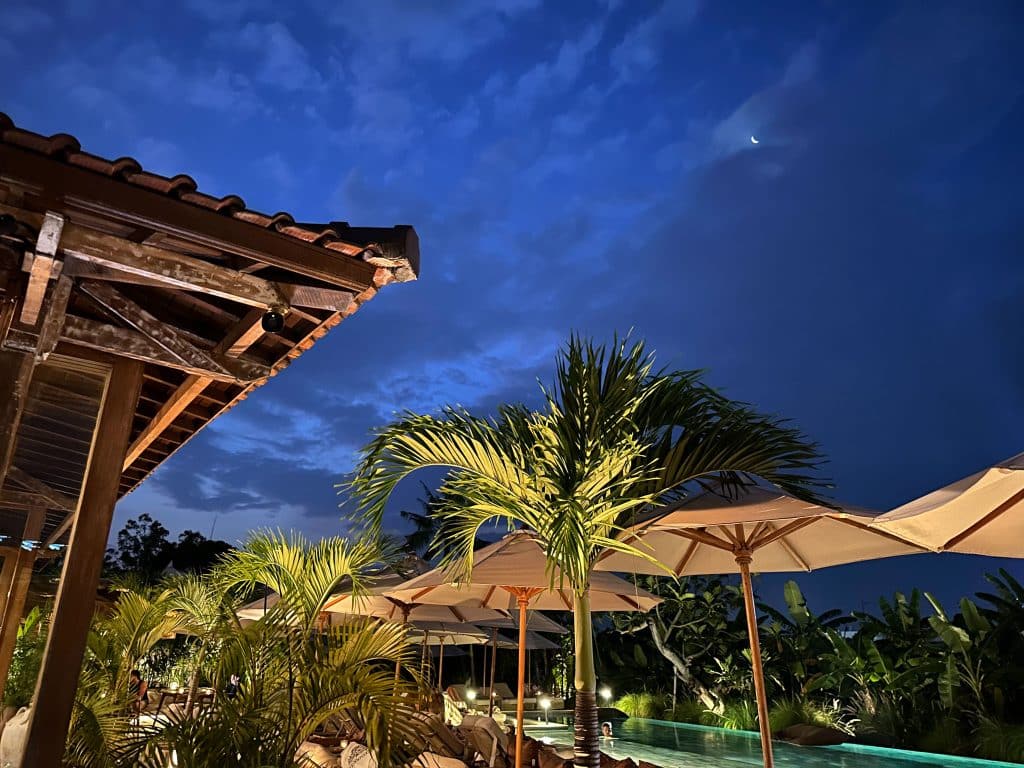
Knowing that digital nomads are a huge part in Bali, these gyms focus on meeting the needs of the nomad since that is their ICP (ideal customer profile) in marketing speak.
The benefits of being able to be in shape and workout and be productive is the key selling point here. You are bound to find like-minded individuals and those that promise health, wellness, or just looking good.
Making Your Choice: Factors to Consider
Location within Canggu
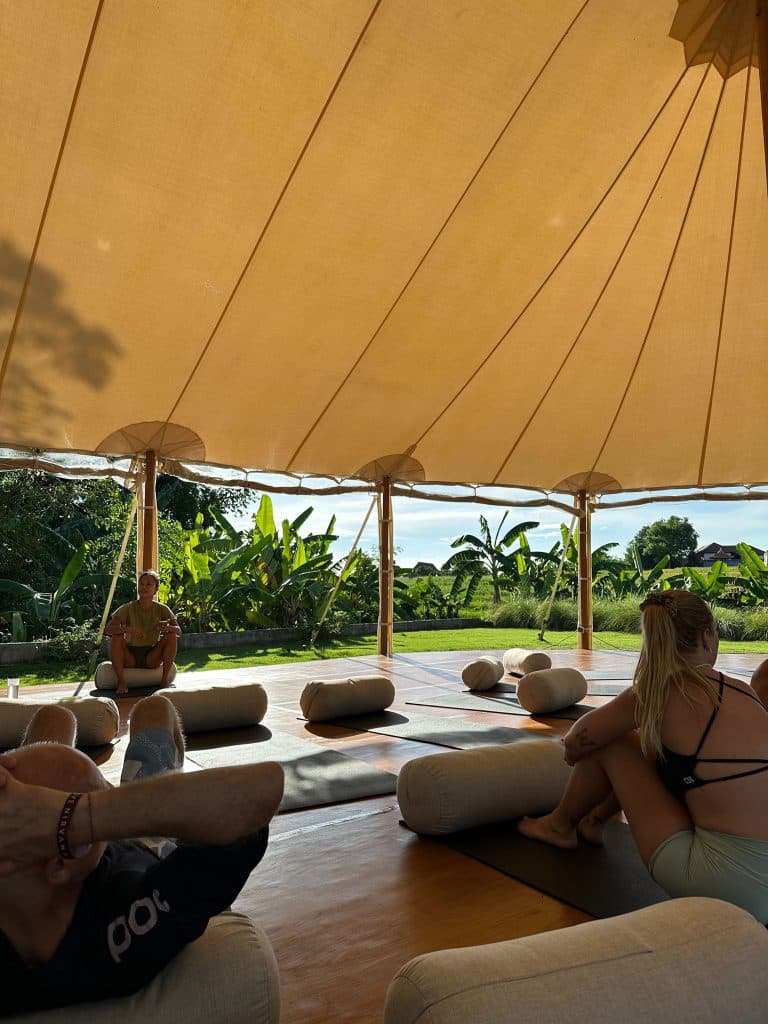
When picking a gym, you want to make sure the place is central to where you want to be, especially if that’s where you will be spending a lot of time. Also, if this is where you want to go, you want to see if your villa, hostel, or hotel is close to avoid the crazy traffic in Canggu.
Budget considerations
You want to find the best gym for your budget. You don’t want to break your budget just to attend a gym. But I will say that the more exclusive gym weeds out the LA Fitness type of person and offers a more elevated experience.
Your primary goals (fitness, networking, productivity)
Find your primary goals. If it’s just working out, maybe Wrong Gym is your best bet. If it’s networking, then Nirvana. If it’s productivity, then I would give the edge to Nirvana.
Length of stay and membership options
I recommend sampling gyms to get a taste of where you want to spend your time or if you want to split it up between two locations. That means signing up for a day pass and figuring out which works better. Don’t get too many day passes since it could outweigh the cost of a monthly membership.
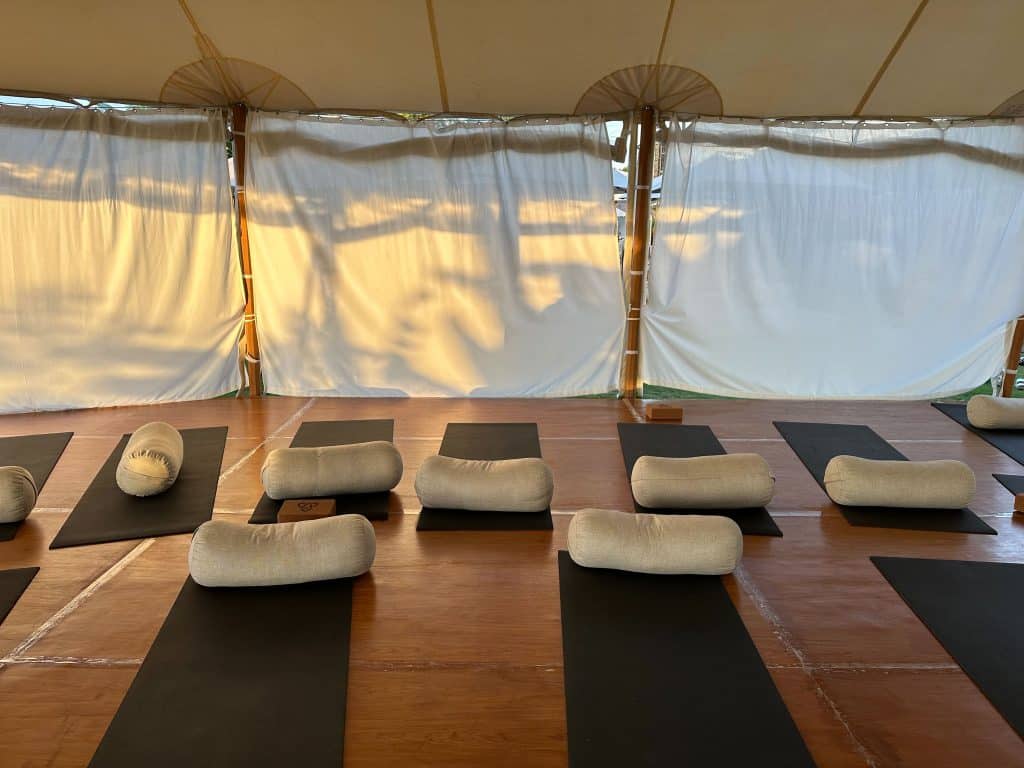
Cultural fit and community vibe
Then you want to figure out what clientele you want to be next to. Do you prefer more influencer clientele types? If you want less of that but you still get influencer types, then Nirvana.
You’re gonna get influencers in both, but some gyms have a more serious experience or the diversity of clients is large enough that it dilutes the annoying influencer type to some degree. Not knocking it, but find what vibe and fit you’re looking for.
Tips, Tricks, and Logistics
- Bali gyms are like mini resorts: You can workout, work on your laptop, eat fresh food, swim, and meet people all in one place. Way better than U.S. gyms where you just work out and leave.
- Three types of people go there: People pretending to build businesses (hustle culture promoters / drop shippers), Instagram influencers who care more about looks than income, and real remote workers with more corporate obligations.
- Nirvana gives a lot but costs a lot: $300/month gets you gym, pool, food, sauna, and workspace, but they treat day-pass users badly and it’s expensive even for Bali
- You meet cool people from around the world: Even with bad traffic, you’ll meet business owners and professionals from around the world you wouldn’t see at normal gyms.
- It’s cheaper than doing it all in the U.S.: In America, gym + coworking + social time costs more. In Bali, you get it all in one place (just don’t expect to take work calls by the pool).

Trip Soundtrack
Because every adventure needs a soundtrack, each of my trips comes with a theme song. And for this trip's anthem? Well, it's...
Conclusion: The Future of Integrated Fitness Spaces

The gyms in Bali have an immersive all-in-one experience that you’d only find in the U.S. at specialty gyms or in certain cities.
Add that to the fact that you’re in Bali with a welcoming population and culture in warm weather, and it makes the experience completely different when you’re working, working out, and swimming in an open-air gym.
I think we can still make this model work in the U.S. with the right-minded people and the right area. Maybe Arizona, a kind of Valley Ho equivalent, but then you have the scorching AZ sun. Maybe Nevada or areas of California?
To me, Nirvana is still an influencer haven gym. But I’d still pick it because overall I enjoyed many of the people I met. I definitely enjoyed the vibe and atmosphere compared to other gyms. It just felt comfortable, and that’s what you want.
Sure, it didn’t have my favorite Hammer Strength Plate-Loaded Iso-Lateral Rowing machine, but a lot of gyms in the U.S. don’t. And again, I’m in Bali sipping watermelon juice by the pool. Can I really complain?
When working as a remote worker or digital nomad, you want a place to workout and also meet people.
It’s hard when you travel as a remote worker and see zero people who do what you do. The closest to your lifestyle are usually unshaven backpackers living out their huge backpacks.
To find a space full of people who understand what it’s like to work remotely—whether it’s drop shipping or legitimate corporate work—creates a sense of wellness and community. After all, we all want to belong, don’t we?

